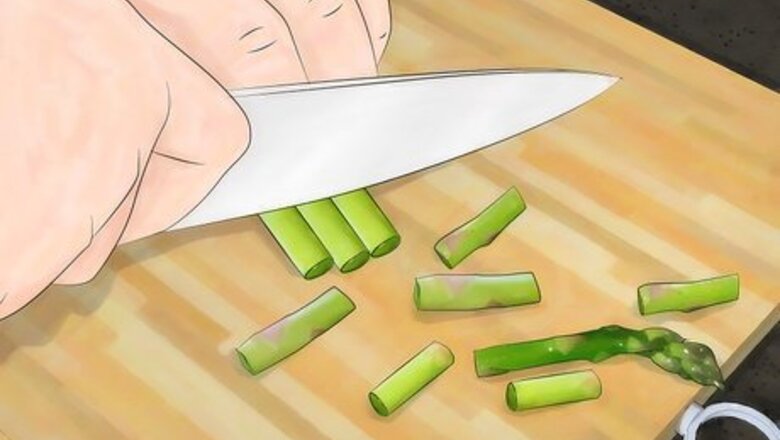
views
Disguising the Taste of Food
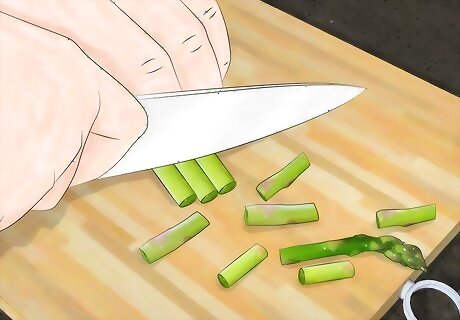
Cut the food into small pieces and swallow. Cut the food you don’t like into the smallest pieces you can so that you don’t have to chew as much and you can mix it in easier with other foods. You might even be able to swallow pieces whole, but be careful not to swallow too-large or hard pieces that might get stuck in your throat.
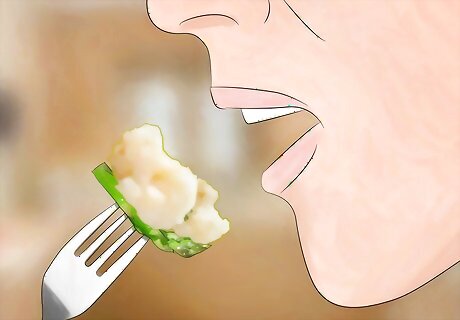
Eat it with something you do like. Surround the food you don’t like with other food you do like on your plate. If you don’t like asparagus, for example, you could push it into a ball of mashed potatoes before putting it in your mouth. Also try simply putting a bite of something you like in your mouth and holding it there as a sort of barrier for your taste buds before you put in a bite of the bad food.
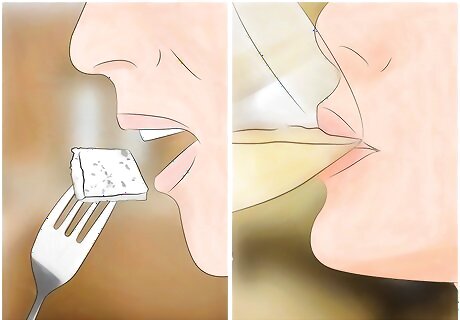
Drink something before and after. Sip from a glass of water, soda, juice, or alcohol right before you take a bite, and then take another sip directly after to replace the taste quickly and help wash the food down.
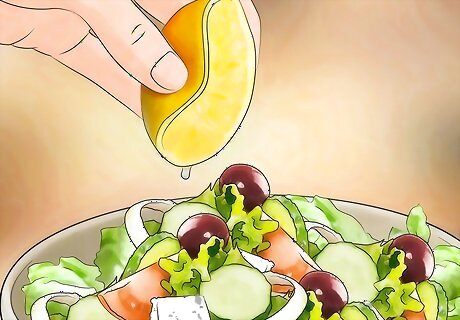
Cover the food with seasonings or condiments. Add salt and pepper, butter, some lemon juice, ketchup or mustard, or anything else available on the table. Be careful not to noticeably overdo it with your seasonings, or ask for something that’s not already available or would clearly not go with the dish, to avoid offending the cook or your fellow diners.
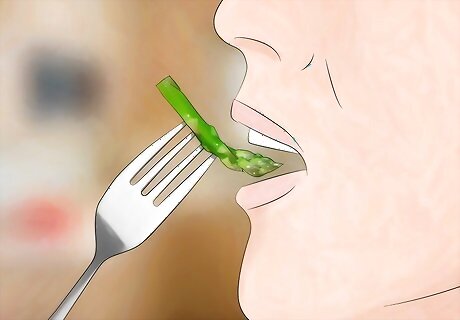
Restrict your sense of smell. Breathe in through your nose before taking a bite of the offending food, then try not to breathe in or out while you’re chewing and swallowing to dampen the flavor.
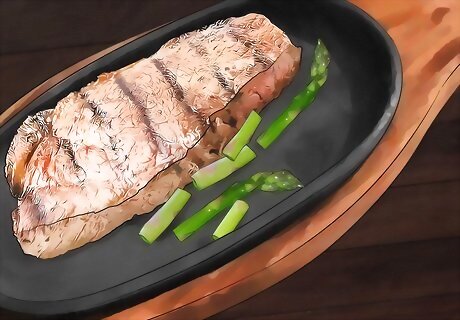
Eat only a polite amount. Don’t feel like you need to eat the entire quantity of the food you don’t like at a dinner party or other social situation. Eat enough that it appears that you’ve enjoyed most of it and are just too full to have the rest. Leave small amounts of other foods on your plate too, so that it doesn’t look like you neglected one thing.
Learning to Like the Food
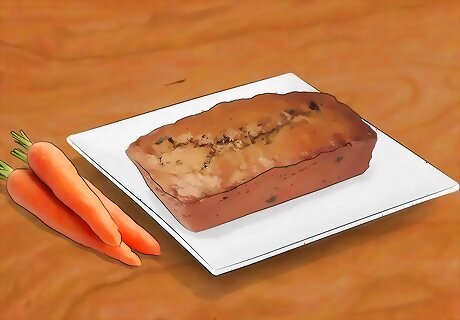
Add it to other things. Look up recipes online that use the type of food you don’t like. There may be a dish that sounds delicious to you that you would never expect would contain that food. Try a dessert recipe that sneaks in a vegetable, or add an offending food to a casserole or soup so it’s mixed in with other things. If it’s a vegetable you don’t like, try any number of desserts that use vegetables in their recipe, like a carrot cake, zucchini bread, or avocado milkshake. This may not help you get used to the taste of the food you don’t like if it’s highly disguised by other ingredients, but it will get you accustomed to the idea that it can be used to make something tasty.
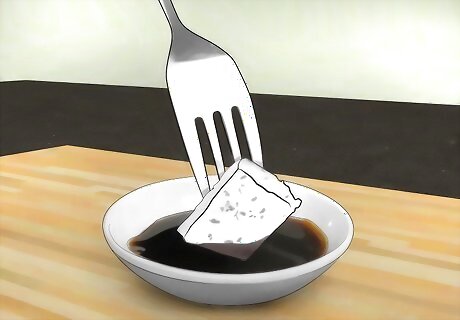
Add seasonings or other flavor. Try preparing or eating the food with new seasonings or sauces, without overdoing it to the point of disguising the food. Get ideas for good seasonings to pair with the food from cookbooks or online. Try several different types of ethnic restaurants for a good way to try different preparations and flavors of the same food.
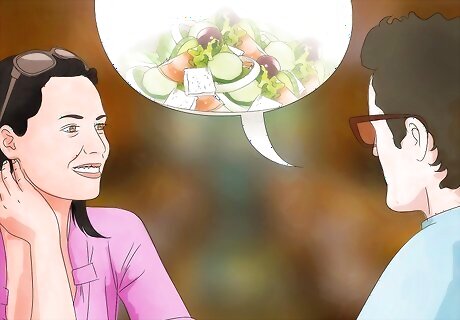
Talk to others about the food. Talk to friends, family, or the host of the dinner you’re at about the food you don’t like and how they like to prepare it. Try these new ways to find one that you like better.
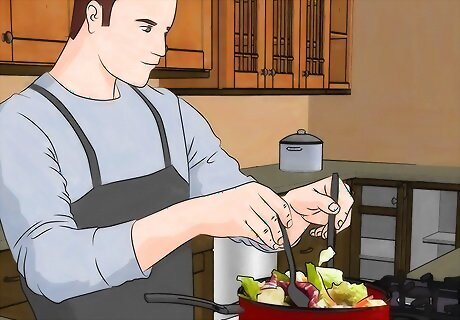
Cook the food yourself. Try taking the recipes you’ve found in cookbooks, online, or from friends and family to prepare dishes with the food you’re learning to like, or just experiment with it on your own! Test out what it tastes like when you prepare it in different ways, like sauteing, steaming, roasting, or even deep-frying. Experiment with whatever seasonings and sauces you have around the house, or try new ones that recipes suggest.
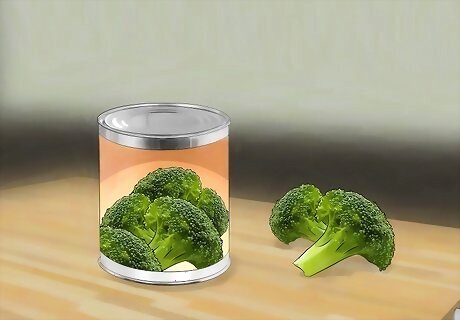
Try different varieties. If there are multiple types of the food you don’t like, give them all a try to see which one you like best. Try both fresh and canned versions, and try getting produce from a farmer’s market instead of the grocery store if it is a fruit or veggie that you don’t like.

Become an expert on the food. Learn everything you can about the food you don’t like from the internet or books. Understanding more about the nuances of the food and understanding its differences from other foods will help you to appreciate it more.
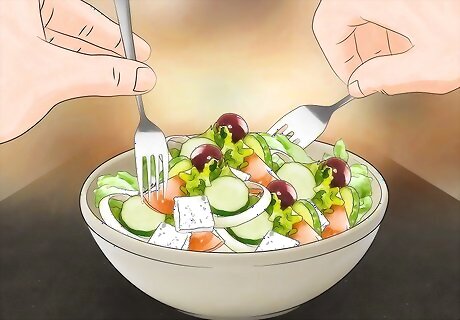
Eat around people you like. However you choose to prepare or eat it, have the food you don’t like in happy situations when you’re surrounded by people you enjoy. This will help change your emotional response to the food to a positive one.
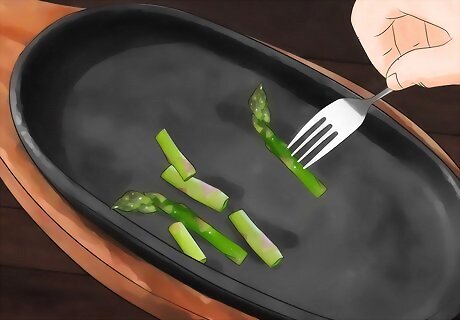
Eat the food as much as possible. Even if you haven’t found a way to enjoy the food you don’t like, continue to eat it as much as possible, even if you have to completely disguise it with other things. You can actually psychologically condition yourself to like a food in this way.




















Comments
0 comment